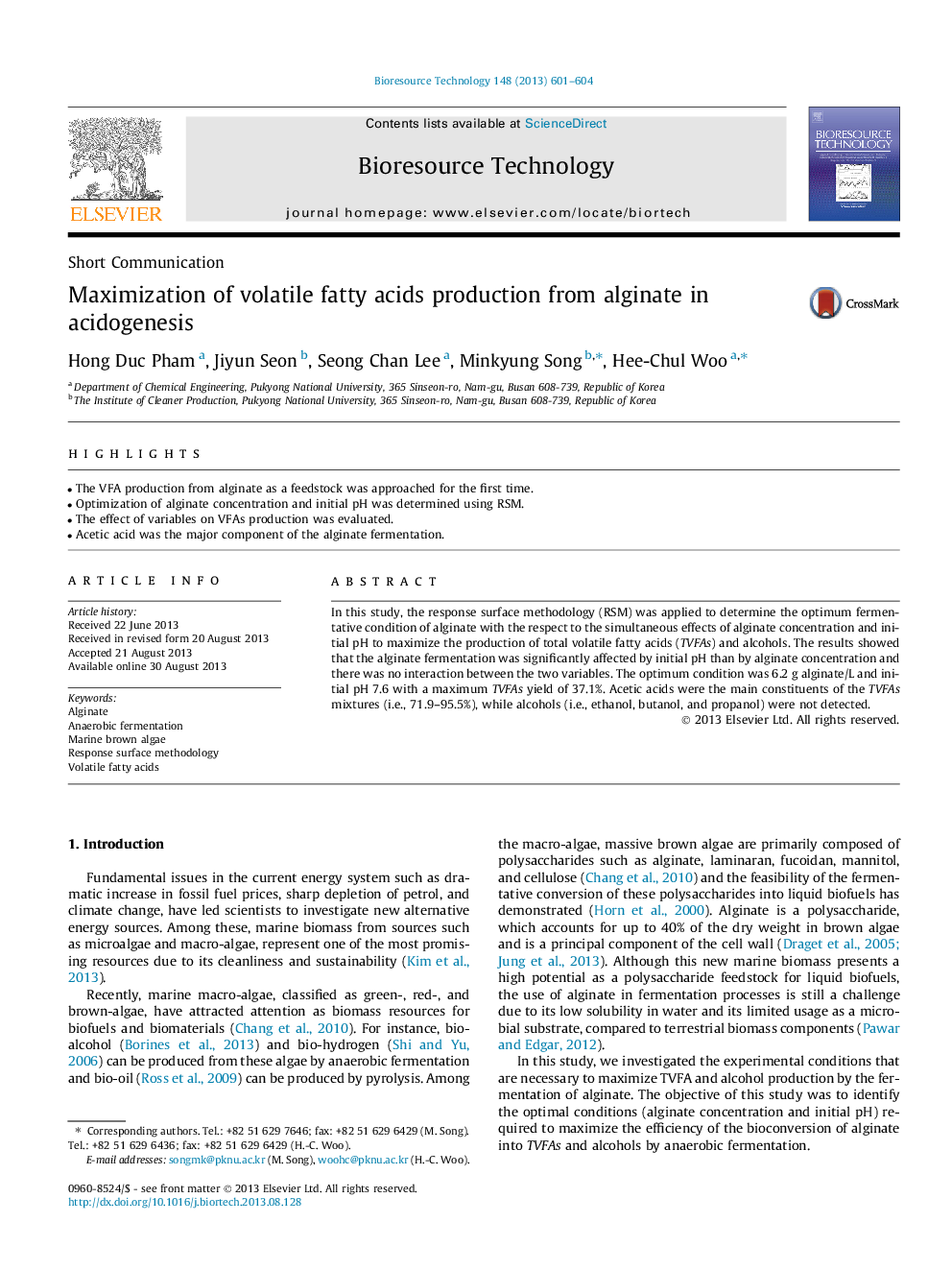| Article ID | Journal | Published Year | Pages | File Type |
|---|---|---|---|---|
| 7080318 | Bioresource Technology | 2013 | 4 Pages |
Abstract
In this study, the response surface methodology (RSM) was applied to determine the optimum fermentative condition of alginate with the respect to the simultaneous effects of alginate concentration and initial pH to maximize the production of total volatile fatty acids (TVFAs) and alcohols. The results showed that the alginate fermentation was significantly affected by initial pH than by alginate concentration and there was no interaction between the two variables. The optimum condition was 6.2Â g alginate/L and initial pH 7.6 with a maximum TVFAs yield of 37.1%. Acetic acids were the main constituents of the TVFAs mixtures (i.e., 71.9-95.5%), while alcohols (i.e., ethanol, butanol, and propanol) were not detected.
Keywords
Related Topics
Physical Sciences and Engineering
Chemical Engineering
Process Chemistry and Technology
Authors
Hong Duc Pham, Jiyun Seon, Seong Chan Lee, Minkyung Song, Hee-Chul Woo,
